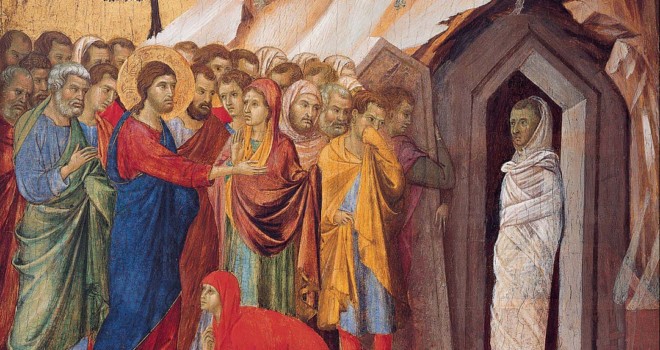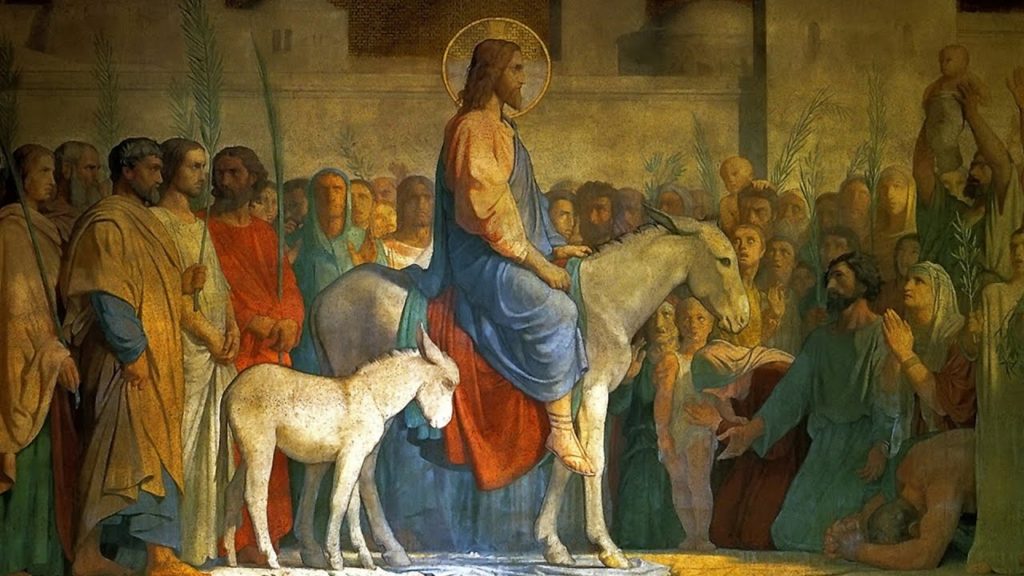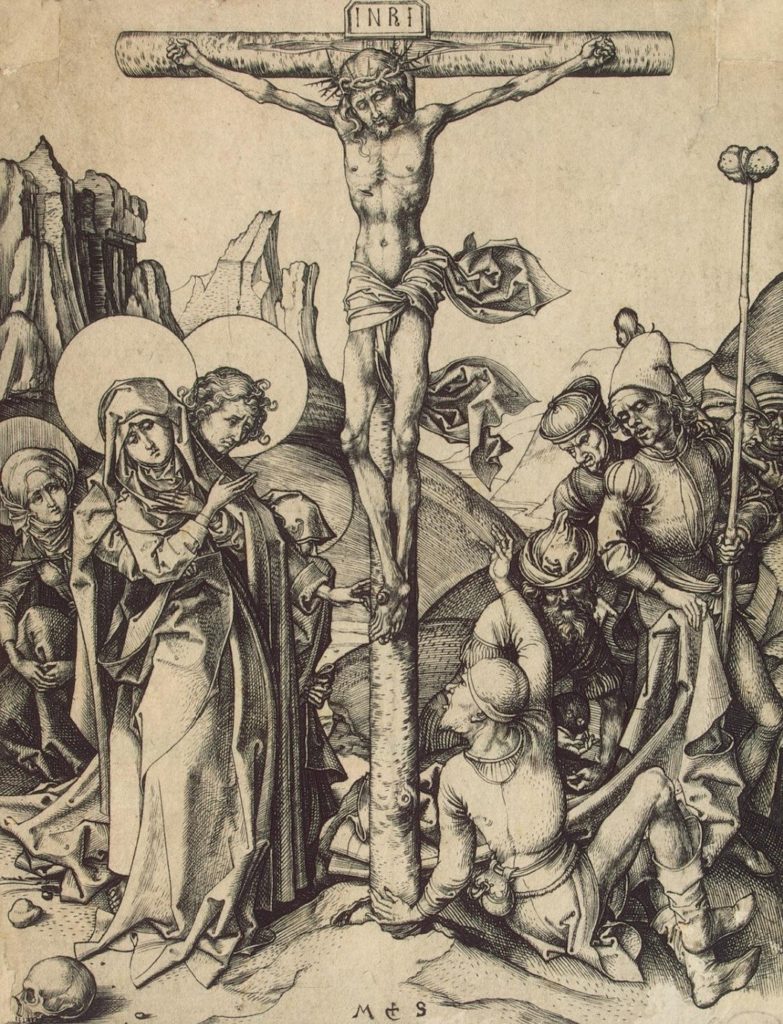Lent - Year A
A collection of Lent resources and Holy Week resources including sermon ideas, whole sermons, sermon series ideas, and more.
Lent Resources 2023
Quick Links
View our collection of Lent resources and Holy Week resources for Year C as well as trusted content from around the web. The current week’s Sermon Commentaries on all four of the Lectionary passages are available every Monday. Looking for resources on other passages? Check out our abundant and easy-filter Library. Also, explore our Preaching Connections for Lent.
First Sunday in Lent Resources, February 26, 2023
Gospel Text: Matthew 4:1-11
Observations: Matthew’s account of the Temptation of Jesus is crisp and direct and loaded with Old Testament background as each of the passages Jesus quotes back to the devil come from Deuteronomy. Jewish readers of Matthew’s gospel would not have missed the theology here: Jesus is the New Israel who does in the wilderness what the first Israel failed to do in their own wilderness tests: namely, he RESISTS temptation. As a Lenten text, Matthew 4’s crispness may cause us to gloss over the fact that these were real temptations for Jesus. The fact that he was so adroit at dispatching the devil with one biblical quote after the next should not make us forget the fact that these were powerful temptations for Jesus. He WAS very hungry. Surely Jesus must have struggled his whole life with the temptation to snap his fingers and take the easy way out of any number of situations. His NOT doing that required constant discipline but he resisted so that he could be as “truly human” as possible. The same goes for the silliest of the three tests as the devil tempts him to throw himself down off the temple. There was no need for Jesus to do this but again, he knew he could snap his fingers and make all well for himself but he refused. And the last temptation was an easy route to what really was Jesus’ destiny of being Lord and King over the world. The devil’s way would have been easier, less painful. Jesus must have thought twice about it.
As a Lent text, we need to help our congregations see themselves in this picture. If we paint Jesus as being supremely above it all and for whom resisting these temptations was easy, we will put distance between the congregation and the text.

Second Sunday in Lent Resources, March 5, 2023
Gospel Text: Matthew 17:1-9 (alternate: John 3:1-17)
Observations on Matthew 17: The story of the Transfiguration is a gospel oddity. With precious few exceptions, Jesus looked every day of his life as ordinary as ordinary could be. Despite the common depiction of him in artwork, there was no visible halo over his head, no peculiar glow from his face, no beatific expression on his face. He was truly human, as the Church has long confessed. But he was truly divine, too, but incognito most of the time. Except here. For a few awesome moments, divine glory burst through. Everything we associate with divinity—power, splendor, blinding light, radiant effulgence—dominated Jesus’ appearance. Elijah and Moses put in a cameo, too. Peter wants to capture it, of course, and keep it going but for now, that just can’t happen.
The text says in Greek that Jesus “metamorphed” or “transfigured” before their eyes, but I’ve long thought that’s wrong. A metamorphosis is usually something that happens when someone or something changes from something it wasn’t previously into something new. In Jesus’ case, however, that didn’t happen: it’s more that something of what he had been all along became visible briefly.
Lent is a time to remember our sins and our mortality. How does a text like this help us do that? Perhaps this way: none of us is divine as Jesus was. Yet the New Testament tells us that we have been recreated into his glorious image, that all who now live “in Christ” have become a new creation even now. The tragedy of our sin is that we forget this. When we are unkind to a Christian brother or sister, we inflict harm on someone who, if we could see who they really are in Christ and what they will look like in our Father’s kingdom, we would be tempted to fall down and worship. When we abuse our own bodies or debase ourselves in various ways, we forget who we are in Christ.
The transfiguration was in its own way a unique event specific to Jesus. Yet its deepest truth dwells deep within us now, too. Remembering that gives us reason to live for Christ now and also hope for beyond the grave. Like Moses and Elijah, we also will one day be with our Lord, talking with him and seeing him as he is even as we shall appear as what we really are already now: glorious beings in Christ!

Third Sunday in Lent Resources, March 12, 2023
Gospel Text: John 4:5-42
Observations: John 4 is one of the most memorable stories in the Bible and it comes to us in the Lenten Season with peculiar force. Yes, Lent is a time to remember our sins and shortcomings and to confess those. But Lent is also a time when, as with this Samaritan woman at the well, we encounter a Jesus who is neither shocked by our sinfulness nor particularly put off by it. My favorite moment in this story is when Jesus confronts the woman with his knowledge of her marital history and current circumstance. With a nervous smile, the woman immediately changes the subject to a theological controversy about where God was properly worshiped. It’s as though Jesus said to her, “You’re shacking up with a guy, aren’t you?” only to have her reply, “Hey, how ‘bout those Red Sox!”
As is true across the gospels, when Jesus was confronted with great sinfulness, he didn’t wince, run away, scold, or take on superior airs. Jesus handled sinfulness better than we typically do! As Lenten lessons go, there is a lot to think about here. Because you rather suspect that had Jesus reacted to this woman the way up-tight and judgmental Christians today might be liable to do, she never would have hung around long enough to get the very living water she so desperately needed.

Fourth Sunday in Lent Resources, March 19, 2023
Gospel Text: John 9:1-41
Observations: Most of the healing stories found in the gospels are brief. Even one or two of the stories where Jesus raised someone back from the dead—a stunning miracle if ever there was one—last no more than a verse or two and then that’s that. Jesus moves on and we never again hear from or about the healed/raised person. John 9 is different. This story of healing a blind man goes on and on and on. The story has multiple layers to it and even includes a kind of coda when the blind man finally gets (literally) to lay eyes on Jesus.
The irony, of course, is that despite all there is to SEE in this story and its drama, the story is finally about how we are all BLIND as bats. And that is what makes this a good Lenten text. Often in our lives we like to fool ourselves into believing that our sins are episodic in nature. That is, here and there we lapse into a mistake or a bad old habit or an error in judgment but those are just little hiccups, little bumps along what is otherwise a very smooth and level path that we travel every day. John 9 reminds us that our most basic problem—and the one that only Jesus can solve—is that we are blind ALL the time such that it is clear-sightedness that is the exception.
A huge chunk of this chapter is, oddly it seems at first glance, devoted to the machinations of the Pharisees as they investigate this matter, call witnesses, interrogate people, etc. To their minds, this was all rational and methodical and clear-sighted and prudent. But in the end we know the truth: the whole thing was a charade, the whole thing in its every detail was founded on blindness.
The idea that without Christ we all can do no more than bumble around in the darkness every day is not a happy fact. It is, however, a sobering Lenten fact to ponder.

Fifth Sunday in Lent Resources, March 26, 2023
Gospel Text: John 11:1-45
Observations: Who knows why the Synoptic Gospels omit this stellar story! It makes you wonder, though. Did Matthew, Mark, and Luke worry that a miracle this stunning would detract from the story of Jesus’ own resurrection? Did they keep this one out so that they could save all their narrative fire for the Grand Miracle on Easter? These are not easy questions and the asking of them becomes more acute when we remember that not a few more liberal folks deal with it by suggesting that the evangelist John must have made this one up because how else could you account for its absence from three other fully formed gospel accounts?
Because make no mistake: this is quite the story and in John’s gospel structure, it’s the straw that broke the camel’s back for Jesus, too. Now the authorities HAD to take action because who knew what would be next if they didn’t. As a Lenten text, there are rich possibilities all over the place in John 11. But in the midst of the Lenten darkness and somberness, perhaps the idea that resurrection life is in our midst RIGHT NOW today—and is not only for the by and by on some misty, distant eschatological horizon—provides rays of hope and light in an otherwise dark season. We have life in us now. True, we still live in a difficult world. Even Lazarus would die physically again–in fact, the Pharisees plot to kill him in John 12:10. Probably they succeeded. So also for now: new life abounds within us but we still get sick, we still die, we still struggle with it all. The raising of Lazarus was a good thing and an event redolent of hope. It reminds us of the resurrection life and power at work in us and in our world even now. But even as darkness creeps right back onto the scene at the end of John 11 and on into chapter 12, so we embrace the light and the life and the power of it all even though for now we know the surrounding darkness is going anywhere just yet.

Palm Sunday Resources, April 2, 2023
Gospel Text: Matthew 21:1-11
Observations: People don’t usually keep celebrating year to year the anniversary of a marriage that ended in divorce. Few people pop open some champagne to help commemorate the date of the day they got fired from a beloved job years earlier. Mistakes, bad events, and tragedies are not typically things we celebrate. Yet in so many ways, the events surrounding “Palm Sunday” and the so-called “triumphal entry” of Jesus into Jerusalem represent a mistake. The disciples and the crowds celebrated in error that day. Their jubilation was fueled by bad theology, wrong ideas, false visions for what Jesus would accomplish on this earth in their lifetime. So why do we keep celebrating it and having even little children re-enact those events?
Perhaps it is because we know that despite the wrong-headed conceptions of the Palm Sunday crowds long ago, Jesus really WAS and IS worthy of all that they said of him. And that may be correct. But then we as preachers need to point that out. And we need to do so in a way consistent with the very Holy Week that Palm Sunday kicks off each year.
We tend to treat Palm Sunday and the entry into the Holy City as the one bright spot in Lent, one last chance to shout some full-throated praises before entering into the perilous darkness of Maundy Thursday, Good Friday, and Holy Saturday. But we need to see this event as part and parcel of all that is coming, not as a distraction from it.

Good Friday Preaching Resources, April 7, 2023
Gospel Text: John 18:1-19:42
Observations: In his film a few years ago, Mel Gibson fairly splattered audiences everywhere with blood and gore. What’s striking about John’s account of it all is how little he focuses on the physical aspects of it all. The flogging and the actual crucifixion itself are dealt with in clipped phrases that last less than a full verse. If John were a filmmaker, the camera would linger on very different things. The ins and outs of the trial, what Jesus said or didn’t say, what Pilate said, what Peter said and didn’t say: these things are the keys to understanding. Suffering suffuses the whole account such that we err if we relegate the suffering of Christ to only those moments when the blood spurted. Everything that had pained Jesus all along is here: cluelessness, stubbornness, blindness, cowardice, disloyalty, injustice. Those are the realities of a sinful world and Jesus had been painfully dealing with them his whole life. As the only truly Holy Person ever to have walked this earth, Jesus never missed sensing all that was wrong with this world. The truth is that across John’s two big chapters dealing with the death of Jesus, those are the things that get the most air-time.
For those of us who preach, there is surely something there worth pondering and proclaiming.

Easter Sunday Preaching Resources, April 9, 2023
Gospel Text: John 20:1-18 or Matthew 28:1-10
Observations: Like all four of the gospels, what strikes you most about John’s presentation of the gospel’s grand event and miracle is how understated the whole thing is. Most churches on Easter morning do far, far more to pull out all the stops, blare the brass band, and ratchet up the drama to fever pitch than any of the four evangelists ever tried to do. There is joy and holy drama here, make no mistake. But there is something marvelous about its understated nature. As someone once noted, when you present a triumphal event in non-triumphal fashion, you create a sense of irony that, in turn, creates a community of those who truly understand the deeper meaning of it all. The fact is that like his entire ministry, so even the capstone event of the whole gospel happened quietly and out of this world’s limelight. The gospel gets revealed to women, to clueless former fishermen, to all those whom the wider world regards as bumpkins and the marginalized. There is something glorious to behold in the fact that King Herod and Pontius Pilate, though they had been deeply involved in the machinations of all that led to Jesus’ death, now simply disappear out of the frame once Jesus is raised. Jesus came, died, and rose again not for this world’s winners who are always so cocksure that they have everything under control but rather for all those lost, least, last, and lonely folks who know that without an infusion of divine grace into their lives, there is flat out no hope. Thanks be to God the gospel gives us just what we need: not brass choirs and fireworks in the sky but new life way down in the deepest parts of our hearts.

Additional Lent Resources
Ideas for Matthew's Gospel Lesson
Observations: You’d think that Easter would come to them. You’d think that the resurrected Jesus would find the disciples and bring Easter right to the front doors of their hearts. But not in Matthew. Matthew 28 is downright busy with what we could call “holiday travel.” The women are on the move. Jesus is on the move. And in the end, if the disciples want to see their resurrected Master, they need to get moving, too, and hoof it clear up to Galilee, a fair hike from Jerusalem (though we usually forget this due to our overfamiliarity with hearing the need for them to go see him in Galilee).Is there significance to the idea that even the disciples had to go find Jesus? Is it significant that even with a resurrected Son of God walking around the planet that most people missed it and that even the disciples had to go hunt him down? Maybe. On Easter we like to sing, “I serve a risen Savior, he’s in the world today” but, of course, most of the world doesn’t see him and, if we’re honest, we don’t see him around every corner, either. But maybe that is why Matthew 28 fits our real world, the real church, and our real experience in both the church and the world: yes, Jesus is alive but you don’t see him everywhere or just anywhere. That is the reality with which we all must live.
Sermon: “Soar We Now” by Scott Hoezee (Audio Version)
Sermon: “The Laughter of the Universe” by John Buchanan
Sermon: “Stealing Jesus” by Craig Barnes (Audio Version)
Lent and Holy Week Audio Sermons
- Symposium 2019 sermon from Habakkuk 3 by Cornelius Plantinga, Jr. "The God of Joy in the Midst of Our Troubles"
- Symposium 2018 sermon on Luke 24 "Dusty Faith" (Easter)
- Symposium 2018 sermon on John 20 by Paul C.H. Lim "Jesus Appears to Thomas"
- Luke 24 sermon by N.T. Wright "Living in God's Creation" (Easter)
- John 20 Sermon by William Willimon "Seeing is Believing"
- John 21 Sermon by John Rottman "The Next Step" (Easter)
- Psalm 22 sermon by Neal Plantinga "The God-Forsaken God"
- Mark 16 sermon by Laura Truax "Meet the Risen Christ" (Easter)
- Isaiah 53 sermon by Mary Hulst "Broken for You"
- Matthew 28 sermon by Scott Hoezee "Soar We Now"
Worship Resources and Lent Sermon Series Ideas
Our Ministry Partner at the Calvin Institute for Christian Worship has a wealth of service planning ideas as well as further ideas for Lent sermon series, Lent music, and much more. View their Worship Resources.
Resources from Reformed Worship Magazine
See all of the back issues of Reformed Worship (organized by liturgical season). You will find many years’ worth of articles, liturgical resources, sermon ideas, and more all tying in with the Season of Lent and Holy Week through Easter. Articles from issues from 2009 and before of Reformed Worship are free.
Scripture Ideas for Lent/Holy Week/Easter
Scriptures and Statements of Faith Applying to the Theme of Ash Wednesday
The following texts are particularly appropriate for sermons or for supplemental liturgical use.
Psalm 51 (and other penitential psalms: 6, 32, 38, 102, 130, 143)
Psalm 90
Psalm 103
Psalm 139:23-24
Joel 2:12-17
Matthew 5:6
Matthew 6:1-6, 16-21
Matthew 11:28-29
2 Corinthians 5:20-6:2
1 Peter 1-2:3
Heidelberg Catechism, Q&As 3-11, 88-89
Scriptures and Statements of Faith Applying to the Theme of Lent
The following texts, which focus on three main dimensions of Lenten spirituality, are especially appropriate for supplemental liturgical use.
Penitential psalms:
Psalms 6, 32, 38, 51, 102, 130, 143
The importance of heartfelt repentance:
Psalm 50
Isaiah 1
Joel 2:12-17
Matthew 6:1-6, 16-21
Baptismal spirituality and unity with Christ:
Romans 6:1-14; 8:12-17
2 Corinthians 1:21-22; 4:1-16; 5:20-6:2
Galatians 2:19-21; 3:27-29
Ephesians 2:4-20; 4:1-6
Colossians 2:9-3:7
Titus 3:4-8
Belgic Confession, Art. 21
Heidelberg Catechism, Q&As 37-39
Canons of Dort, Pt. II, Art. 2-5, 8
Westminster Confession, Chap. VIII, Sec. 4; Chap. XV, Sec. 1-6
Our World Belongs to God, st. 25-28
Scriptures Applying to the Theme of Passion/Palm Sunday
The following texts are especially appropriate for supplemental liturgical use.
On Christ’s procession into Jerusalem:
Psalm 118:19-29
Zechariah 9:9-12
Matthew 21:1-11
Mark 11:1-11
Luke 19:28-40
John 12:12-19
On Holy Week and Christ’s passion:
Psalm 31:9-18
Isaiah 50:4-9; 52:13-53:12
Matthew 21-27
Mark 11-15
Luke 19-23
John 12-19
Philippians 2:5-11
Scriptures and Statements of Faith Applying to the Theme of Maundy Thursday
The following texts are particularly appropriate for sermons or for supplemental liturgical use.
Exodus 12:1-14
Psalm 23
Psalm 34
Psalm 103
Psalm 116
Isaiah 25
Isaiah 53
Matthew 26:17-46
Mark 14:12-72
Luke 22:1-46
John 6
John 13-17
1 Corinthians 10:1-22
1 Corinthians 11:17-34
Colossians 3:12-17
Hebrews 9
1 John 4:7-21
Scriptures and Statements of Faith Applying to the Theme of Good Friday
The following texts are particularly appropriate for sermons or for supplemental liturgical use.
Genesis 3:14-19
Genesis 22:1-14
Numbers 21:4-9
Deuteronomy 21:22-23
Psalm 22:1-18
Psalm 43
Psalm 49
Psalm 51
Psalm 105
Psalm 130
Psalm 143
Isaiah 50:4-9
Isaiah 52:13-53:12
Lamentations 3:1-9, 19-33
Zechariah 12:10-13:9
Matthew 26:47-27:66
Luke 22:39-23:56
John 3:13-21
John 10:14-18
John 18-19
Good Friday (continued)
Acts 13:16-41
Romans 3:21-26
Romans 8:1-17
1 Corinthians 1:17-21
Galatians 3:1-14
Ephesians 2:13-22
Philippians 2:5-11
Colossians 1:19-23
Colossians 2:13-15
Hebrews 2:5-9
Hebrews 4:14-5:10
Hebrews 10:1-25
Hebrews 12:1-3
1 Peter 1:10-20
1 Peter 2:19-25
1 Peter 3:13-22
1 John 3:16
1 John 4:7-21
Revelation 5:6-14
Belgic Confession, Articles. 20-21
Heidelberg Catechism, Q&As 37-44
Canons of Dort, Pt. II, Art. 3-4, 8; Rej. 2, 7
Our Song of Hope, st. 4
Our World Belongs to God, st. 27